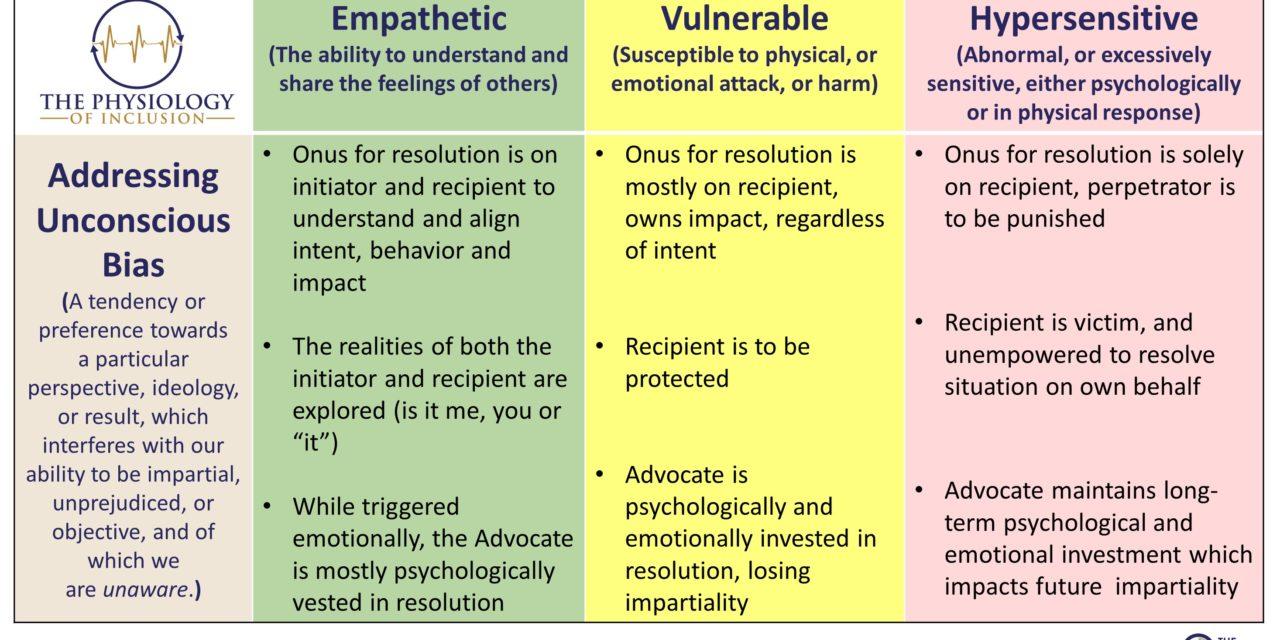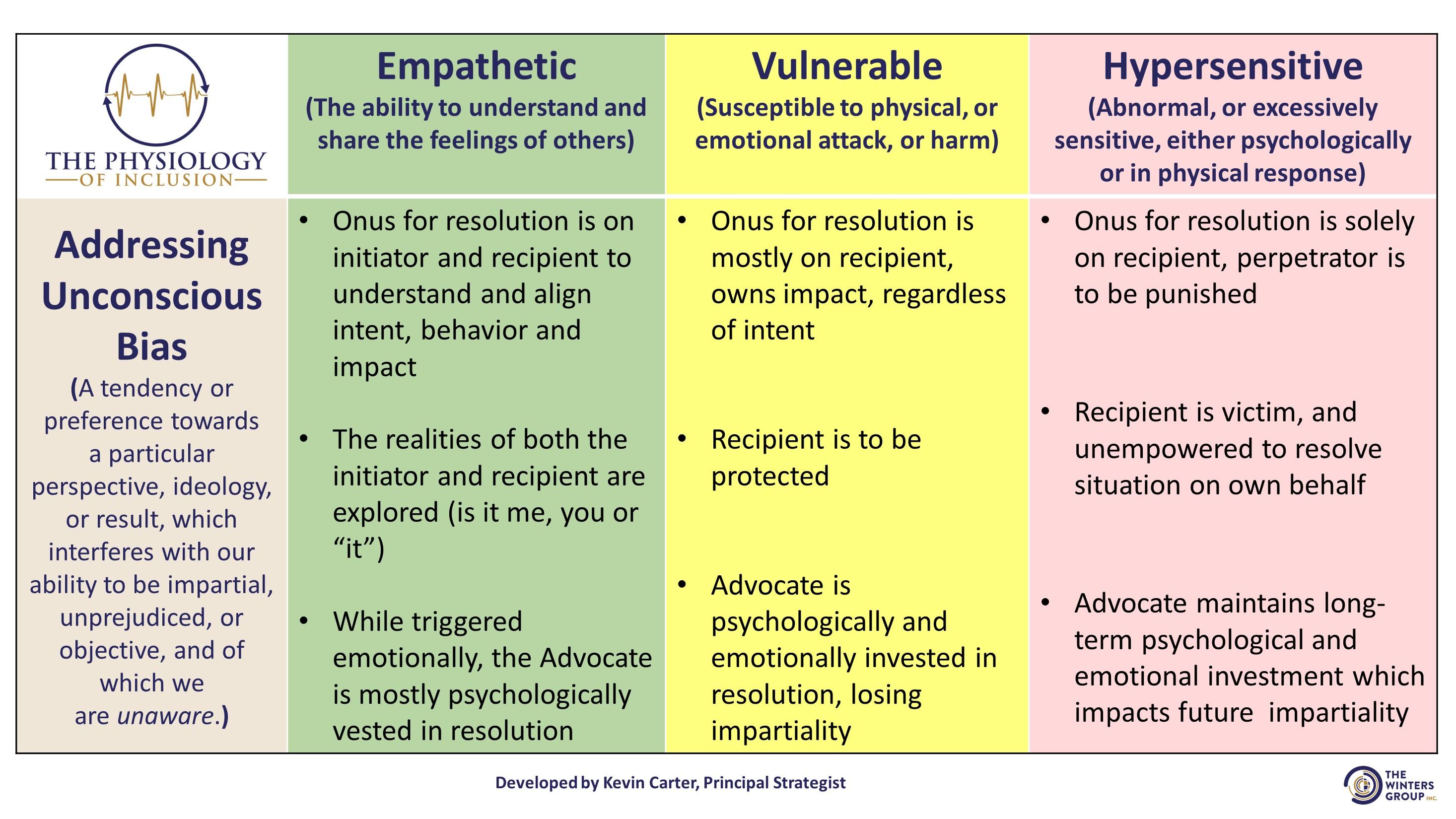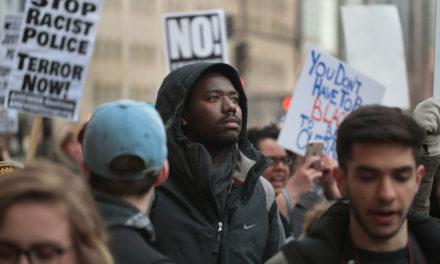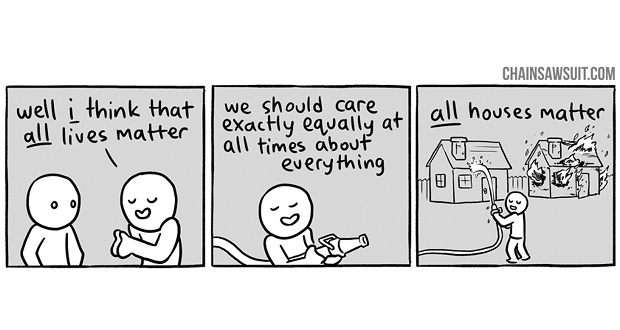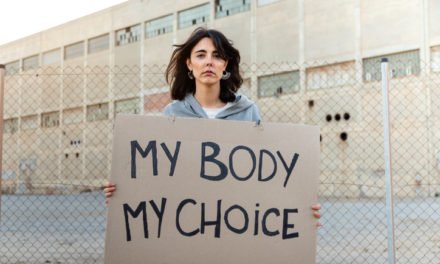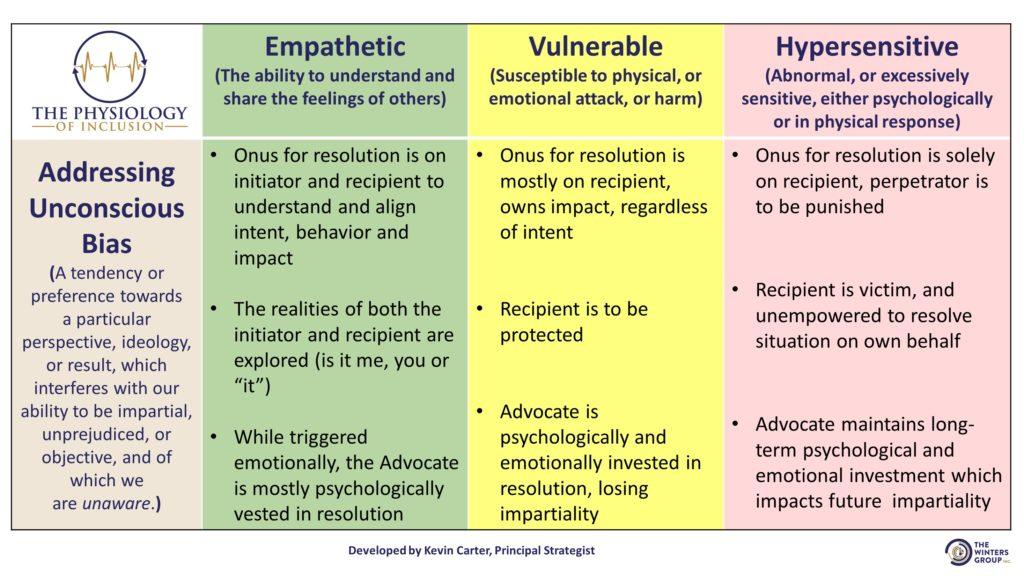
Effective Empathy Through Life Orientations
During a recent cultural competence session I was facilitating, a participant asked: In addressing unconscious bias, what is the difference between empathy and hypersensitivity?
The question was posed by a millennial white male who felt that complaints or concerns about unconscious bias, micro-inequities, and covering were the result of hypersensitivity.
I sparked the question by sharing an experience at one of my prior employers. As a recent MBA graduate, I was working on the weekend, completing a report for an investment banker. Dressed in a button-down shirt, jeans, and tennis shoes, I was waiting on the elevator to open so that I could go up two floors and place the report on the banker’s desk. When the elevator opened, an older white male, dressed in a button-down shirt, jeans and dockers, exited the elevator and said: “If you are wondering where the mailroom is, it is two floors below.” I believed the gentleman was assuming that African Americans could only work in the mailroom.
As someone new to the company, I did not ask the gentleman why he had made the assumption. I just said, “I recently joined the company and was taking a report to an investment banker.” To which, he replied: “Oh, okay.”
From that day forward, I always wore a Vanderbilt University cap and T-shirt whenever I worked on the weekend to project that I belonged and to attempt to cover the perceived stigma of my race.
It was at this point; the millennial white male said: “Aren’t you assuming that the gentleman was biased due to your race? In addressing unconscious bias, what is the difference between empathy and hypersensitivity?” In my response, I offered Life Orientations as a method to find common ground.
The Life Orientations Method® is an applied behavioral science that promotes individual and group productivity. It begins by identifying preferred life orientations or behavioral styles. “Productivity, in Life Orientations terms, is defined as the full use of one’s strengths and uniqueness in relation to the full use of the strengths and uniqueness of others. LIFO philosophy maintains that behavior exists on a continuum, from strength, to early warning sign of excess, and to excess. Our strengths, in excess, lead to unproductive behavior and impact.
I acknowledged that I had assumed the gentleman was biased. To this day, I believe I was correct in my assessment. I thought the gentlemen intended to be biased, his behavior or question was indicative of that bias, and the impact of his question was that I feel belittled and devalued. However, was my resolution more indicative of vulnerability, or even hypersensitivity?
Unconscious Bias is a tendency or preference toward a particular perspective, ideology, or result, which interferes with our ability to be impartial, unprejudiced, or objective, and of which we are unaware. Fostering empathy is a recommended action to address and manage the impact of Unconscious Bias.
When we practice empathy by understanding the aspirations, obstacles, and feelings of others, we are more impartial and discerning in our thoughts and actions towards others.
With regard to addressing unconscious bias, Diversity, Equity, and Inclusion practitioners who strive to exhibit empathy (a strength) might be mindful to avoid hypersensitivity (an excess).
With regard to addressing unconscious bias, Diversity, Equity, and Inclusion practitioners who strive to exhibit empathy (a strength) might be mindful to avoid hypersensitivity (an excess). Click To TweetThe chart below depicts how empathy can be a strength, or in excess, hypersensitivity, as it relates to unconscious bias. In the example, I am the recipient of the action by the older gentleman, who is the initiator. Any third-party trying to resolve the situation would be the advocate.
So, was my resolution more indicative of vulnerability, and even hypersensitivity? I would say yes, I did venture into vulnerability, even hypersensitivity. While we may excuse my youth and inexperience at the time, I did believe the onus for resolving the situation was on me. Moreover, I chose a solution, the wearing of the cap and T-shirt, that probably made me feel like a victim because those pieces of clothing were not going to hide my race.
After I shared this personal reflection, the millennial White male said something surprising: “You know, that gentleman was probably biased. In hindsight, I think I feel that minorities always believe someone is biased or prejudiced, but no one seems to stop and reflect that they are misperceiving a situation. You stopped, reflected, and considered my opinion.”
During a break, the class participants talked, and our conversation inspired the chart above. In retrospection, an empathetic response to unconscious bias has three components:
- Both the recipient and initiator have a responsibility to align intent, behavior, and impact. If the recipient owns the burden, they also own the solution, and the initiator becomes the enemy, or perpetrator to be punished. Looking back, while it would have taken courage to suspend judgment and ask, “What was your intention?” this question would have encouraged the gentleman to engage in self-reflection, and perhaps better understand the genesis of his question.
- The source of the conflict may be “you, me, or it.” Sometimes, a recipient of behavior can over-react and assume bad intent when there was none. Other times, an initiator can intend to hurt or cause harm. Still other times, both parties are thrust into a situation in which a misunderstanding is the biggest problem.
- Finally, while an incident may emotionally trigger us to act, it can sometimes be disadvantageous to remain emotionally connected to a conflict, as opposed to primarily invested in a solution. Being able to empathize with what another person goes through and offering support and understanding can save someone’s life, in some cases, but it can also drag you down for weeks, even months, after the interaction. My encounter with the gentleman in the elevator stuck with me for quite a while. Early in my career I was always “dressing up” to impress—not because I wanted to, but because I assumed it was the best strategy to be treated fairly at work, restaurants, department stores, etc.
So, if you want to maintain empathy as a strength: confirm intent, do not solely own a resolution, consider the possibility that all actors are thrust into a situation beyond their control, and look for ways to step back emotionally from a problem while you mentally consider your options.
If you want to maintain empathy as a strength: confirm intent, do not solely own a resolution, and look for ways to step back emotionally from a problem while you mentally consider your options. Click To Tweet
